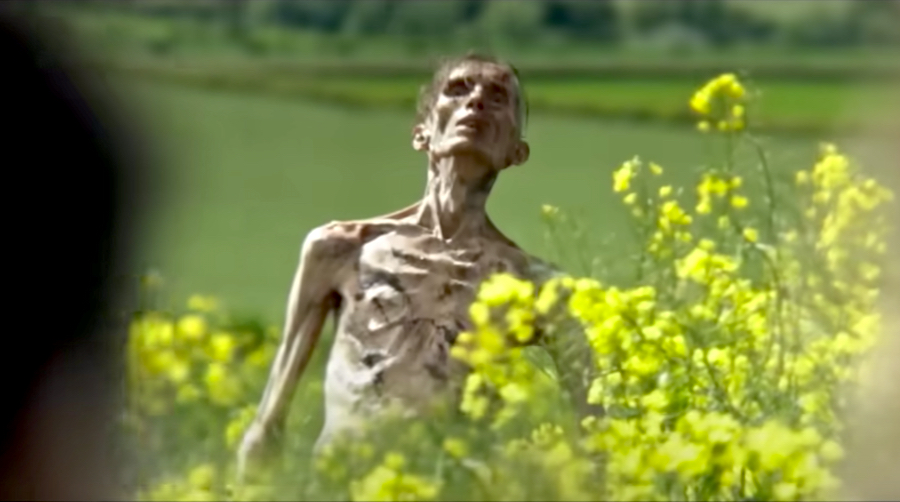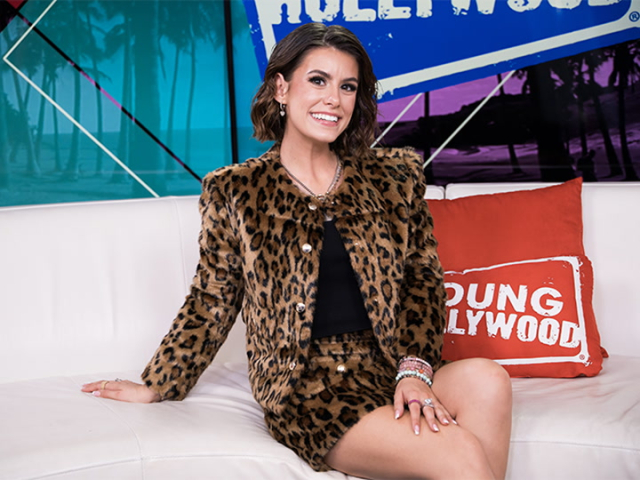How '28 Years Later' Perfectly Caps The '28 Days' Trilogy -- And Sets Up a New One!

The 28 Days Later franchise, created by visionary filmmakers Danny Boyle and Alex Garland, is one of the most legendary and influential zombie IPs of the 21st century. The series follows the evolving timeline of the "rage" virus that has laid waste to the U.K. It revolutionized the type of zombies that were seen in film, making them faster and meaner than in previous zombie media. Its influence can be seen across mediums, such as in "The Last Of Us", "The Walking Dead", Zack Snyder's Dawn Of The Dead, Shaun Of The Dead, and many more. Since the infected are just sick people with the rage virus instead of being undead, it allows for the films to use the genre to tell richer storytelling, both visually and textually. They explore human nature and the relationship between rage, empathy, and love, all while being viscerally horrorifying.
[Warning: Spoilers for 28 Days Later, 28 Weeks Later, and 28 Years Later!]
28 Days Later was born from anger. Specifically Alex Garland’s frustration, at the time, about the complacency of England to what was happening to countries facing intense hardships, so he took it out by bringing it to the U.K. The opening is an act of compassion -- animal-rights activists attempting to free chimpanzees that were being experimented on -- but that compassion quickly turned to the downfall of English civilization. When we finally see the streets of London, it’s a wasteland. Jim (Cillian Murphy) wanders around in this desolate place that used to be brimming with life. The MiniDV they used to capture the wrecked streets of London give the film this digital grit in order to visually portray the apocalypse.
“I saw an artistic, logical justification for shooting this film on this format because it was a very violent script -- very disturbing, gritty and anarchic," explained cinematographer Anthony Dod Mantle.
Boyle and Mantle used this digital griminess of a home video camera to give it a 480p, darkly-lit look. They used minimal lighting setups so the audience was fully immersed in this fallen society that had no electricity. It gives shots these harsh shadows and a high contrast that you couldn’t get the same way if they shot on film. The artistic choice to make this feel like found footage (though it’s not a found footage movie) allows the film to stand out from its peers and feel uniquely terrifying.
Jim finds Selena (Naomie Harris), who affirms to him that there is no hope, only survival. It’s as if the U.K., infected and uninfected alike, are all animals just trying to make due. But as they find more survivors in father-daughter duo Hannah (Megan Burns) and Frank (Brendan Gleeson), life ahead looks brighter all thanks to their found family and hope that the military may have found a way to beat the infected. They are raiding grocery stores as "A.M. 180" by Grandaddy plays, driving on top of abandoned cars while laughing, and having picnics. This joy is ruined by Frank getting infected right before they reach the base, as well as when they finally do reach Major Henry (Christopher Eccleston). Here the army quickly reveals their true nature and intentions on how to prosper, kidnapping women and forcing them into sexual servitude. There was a light at the end of the tunnel that was swiftly snuffed out by humanity -- and men specifically -- being even worse than the rage-filled zombies they are trying to survive.
This section is extremely dark, both thematically and visually. We as an audience are fully immersed in Jim’s attack on the military base as we see him fight in pitch black and harsh rain. It’s like he’s one of the infected the way he is shown to us with how he pops out of the darkness, how fast the camera is moving, and the quick cuts. They intentionally blur the lines between the rage-infected people and the remaining humans. They are able to escape after using their own tools, an enraptured zombie Henry was using as research, and find shelter up north where they seemed to have found some peace. Because this ending is optimistic about the future of their world, the final scene was shot on 35mm film. This sets it apart from the rest of the visuals of the film, being clearer and brighter and paving the way for what seems to be a happy ending.
After 28 weeks, the infected starve to death, so the American military come in to help facilitate the escaped-refugees back to their home, but 28 Weeks Later starts on a bleak note. We see Don (Robert Carlyle) and Alice (Catherine McCormack) during the height of the infection, hiding with people in a farmhouse in the country. They are sheltered and hesitant to let anyone in, including a little boy who has been running for days, except for Alice. It’s her motherly instinct to help this young boy. However, his arrival also brings a hoard of infected that are impossible to fend off, so they start trying to escape. Don tries to get Alice to leave with him but she won’t leave the boy to die, so Don selfishly leaves Alice in the house with the kid to get attacked and bit. It’s a harrowing sequence, which was actually directed by Danny Boyle, who did second unit photography on the film. 28 Weeks Later is an outlier in the franchise, opting to film entirely on 16mm and 35mm film, which was only used in 28 Days for the ending. It’s still gritty like 28 Days, but not because of the lower quality capture. It could be because, after the opening, things are looking better for the future of the U.K., which matches its use in 28 Days Later, but it’s most likely because they had more budget to shoot entirely on film.
The American military, which features Doyle (Jeremy Renner) and Scarlet (Rose Byrne), is rehabilitating London and the returning escaped refugees, where we meet Tammy (Imogen Poots) and Andy (Mackintosh Muggleton). They return home to their dad, Don, who reveals to them the semi-truth about what happened to their mom. This prompts Tammy and Andy to go out of the quarantine zone and retrieve their old stuff, but more importantly to get a picture of their mom so they can remember her. When they are exploring their old home, they find their mom in the attic still alive and seemingly not infected. This is a sinister reveal in the film, exposing Don’s true nature to his kids. When they are taken back to quarantine, Scarlet finds out that Alice has some kind of immunity to the virus and wants to use her to find a cure. This is cut short when Don goes to visit Alice and gets infected by kissing her, going back to Day Zero. When the virus starts spreading throughout the quarantine zone, the military starts killing everyone in order to contain it.
Meanwhile, because of her discovery, as well as out of compassion for how young they are, Scarlet attempts to get Tammy and Andy to safety in hopes one of them has the same immunity as their mom. They meet up with Doyle, who is against killing non-infected people, and the four of them try to get out of London before the military firebombs the streets. Doyle sacrifices himself in order to get Scarlet, Tammy, and Andy out of the gas-riddled streets and is burned by his own government. The remaining three try to make their way to the stadium where the chopper is, taking a shortcut in the subway. This sequence is shown through a night vision scope, which harkens back to the lower quality of 28 Days Later. Scarlet is then bashed in by an infected with the gun while the kids are scattered in the dark, dreary underground of London. Tammy and Andy reunite and are able to escape, yet Andy is bitten but ends up having the same immunity as his mom. The film is heartbreaking, despairing, and more evil than 28 Days was but in the best way. 28 Weeks Later again shows the worst of humanity, but with little to no hope that things will improve this time as all governments turn their back on the U.K.
28 Years Later is a coming-of-age film set during an apocalypse about learning to hold empathy for others instead of hate. 28 years have now passed, the infected have evolved, and there are societies that have learned to survive despite the state of their homeland. We follow Spike (Alfie Williams) as he ventures onto the mainland for the first time with his father Jamie (Aaron Taylor-Johnson). It’s his coming-to-manhood in the eyes of his secluded, anarchic village. The adults and elders of Holy Island have built an England of old. They have weird ritual traditions, odd masks, there’s footage in the film from Henry V (1944), they believe ghost stories about a man burning bodies, and they have gender “normative” roles in their society that everyone plays into. Jamie plays into his role and is trying to get Spike to become a part of it as well. It’s a patriarchal, neo-traditional environment that can breed toxic masculine traits which Jamie exhibits at times.
Jamie is growing distant from his sick wife Isla (Jodie Comer), pre-grieving her loss by cheating and holding a lot of anger inside of him. But Spike isn’t like his dad. Spike discovers his dad cheating, and when he learns about a potential doctor on the mainland, he immediately distances himself from his dad to help his mother. They journey into the destroyed Scottish Highlands to discover what 28 years has done to the mainland and how the infected have evolved to survive. There are now fat infected, called "slow lows", that feed on the earth and hoards of infected that are led by an Alpha. The hoards run after our protagonists like usual, but they are also still human. They try to do normal activities like bathing, but they just don’t have the proper brain function to know how to do it, so it turns into splashing in a creek.
Spike and Isla meet Erik (Edvin Ryding), a Swedish soldier that has been stranded from his lookout boat. Erik’s character adds insight into the outside world and its progression without the U.K., as well as some much needed levity at that point of the film. The trio discover a pregnant infected woman, who is in the middle of giving birth, and instead of running or killing her, Isla slowly approaches to help her because she understands the pain and needing someone to be there during that trying time. Erik kills her right after she gives birth to an uninfected baby, and, as instant karma, he is immediately killed by an Alpha, who is clearly the father of the baby. This leads to them finding the doctor, Kelson (Ralph Fiennes), who was in fact burning corpses, but it was for a bone monument, a memento mori, for all the people who have died. When Spike learns Isla’s sickness can’t be cured, even if everything didn’t get wiped out, he’s sad but is able to accept it and understands it’s all just a part of life. Spike has surrounded himself with these empathetic role models which lead him on a path to becoming a better man than who he would’ve been if he had stuck to his role in the village.
“Memento Mori, remember you must die… Memento Amori, remember you must love.”
The ending, which is a coda for the next film in a new trilogy 28 Years Later: The Bone Temple, introduces an older Jimmy (Jack O’Connell) from the cold open, who has a whole family of Jimmys. It’s a wild tonal shift but isn’t far from the messaging of the film. 28 Years Later explores misguided nostalgia, like with the village, and this is no different. Jimmy’s design is based on notorious sexual predator Jimmy Saville. Jimmy would’ve been a kid when Saville was a popular media figure before everything came out about him, so Jimmy would’ve looked up to him. He also clearly looked up to the Teletubbies and Power Rangers when he was a kid, as they are inspirations for his gang. We currently know nothing about the sequel or about Jimmy apart from what we’ve seen. So, we can’t determine what direction this will all go in, but from what Boyle and Garland have said about the trilogy, The Bone Temple will introduce Spike and the audience to a new type of evil from what we’ve seen so far in the franchise.
There is so much to discuss about the 28 Days Later franchise, and especially this latest entry 28 Years Later, like the iPhone rigs they used for 28 Years! The series has so much to say about human nature, our tendency towards rage, love, and empathy, while being a stylistic wonder. Director Danny Boyle and writer Alex Garland, as well as 28 Weeks Later director Juan Carlos Fresnadillo, and writers Rowan Joffe and Enrique López Lavigne, are masters of their craft and have created such a rich universe of films that will go down in history as one of the most bold horror franchises ever. The next film 28 Years Later: The Bone Temple, which has already been shot, is directed by Nia DaCosta and written by Garland, and is set to be released on January 16, 2026 -- 28 weeks after the previous film.
28 Years Later is in theatres now!



